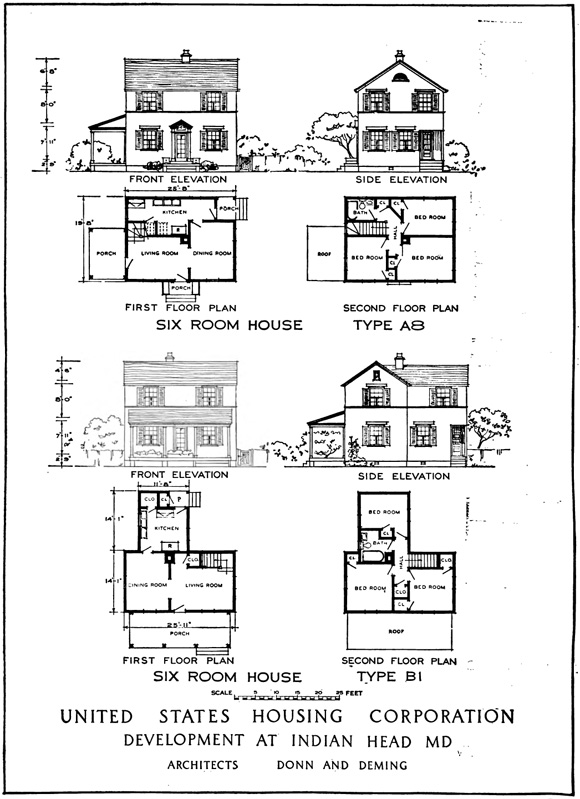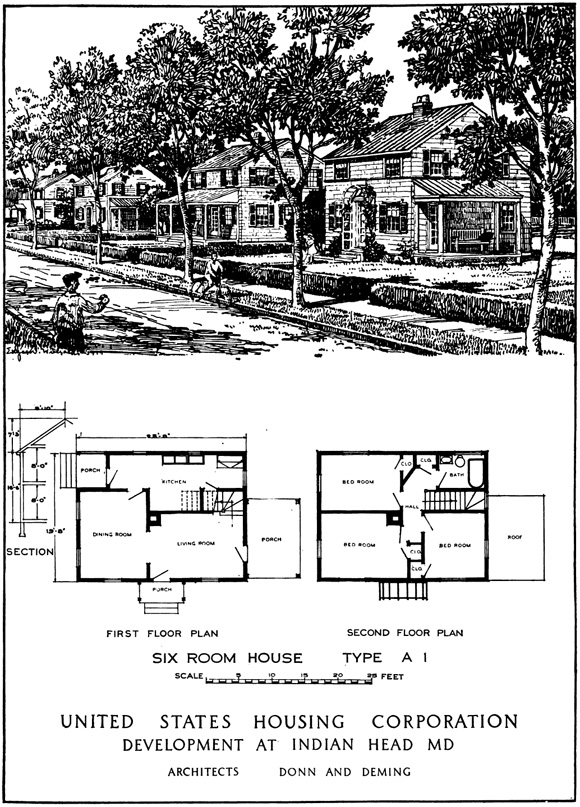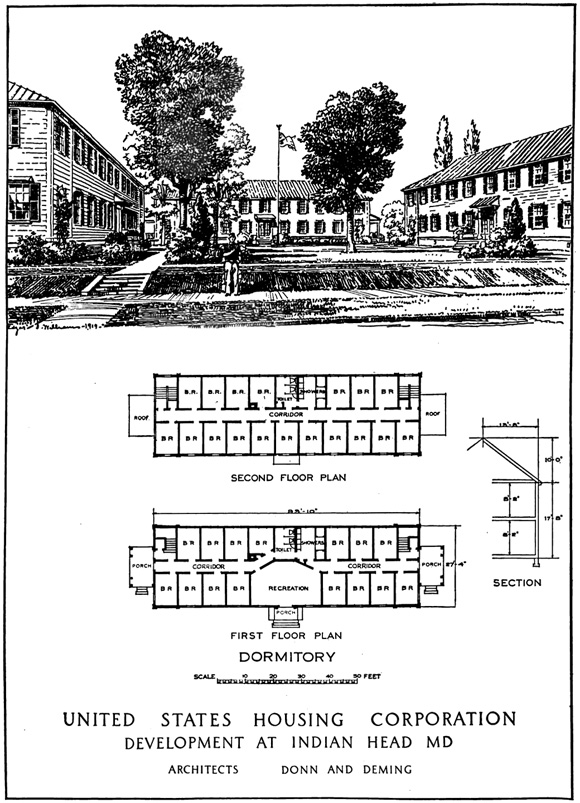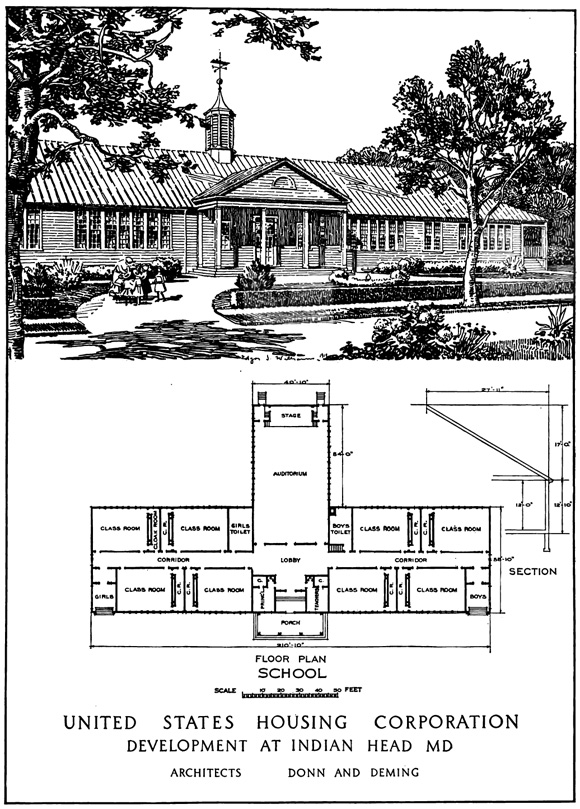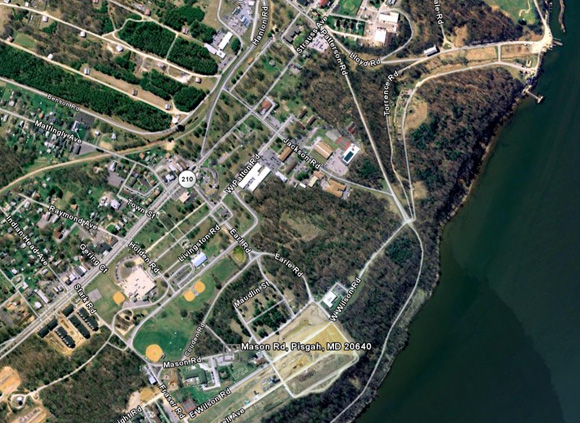Indianhead, MD
General Description (1919 report):
"The proving ground and the smokeless-powder works for the United States Navy are both located at Indianhead, a peninsula at the junction of Mattawoman Creek and the Potomac River, 25 miles shouth of Washington on the Maryland shore. There is a straggling village of about 40 houses here, located mostly on land owned by the Navy Department...
"For the housing site there was chosen about 180 acres of Government-owned land within three-quarters of a mile of both the powder works and the proving ground. The site is a partly wooded upland...The western portion is indented by several steep-sided ravines, heavily wooded. A small rectangular street development had already been started upon bits of level woodland lying between these ravines and north of Charles County Road. East of this was the area to be newly developed, although the scheme included completing the grading and utilities for this early development also. The existing utilities installed by the Navy could be readily extended into the new work.
"Just outside the reservation...are a few stores, the post office, and a bank. Not far away is a church and a very inadequate school building. Other than the straggling village, the area for miles around is farming land, corn and tobacco being the principal crops.
"After investigation and consultation in detail with the Navy officials concerned, the Housing Corporation planned for the following facilities: a) post office, to be built by Navy Department; b) school; c) 100 or more detached houses with ample yards, for homes for skilled workers in the powder works, some of whom it was expected would take at least one boarder; d) eight or more four-family apartment houses of a type already in use in the little village, for skilled workmen with small families; e) six or more dormitories for single men, 34 to a building, for unskilled labor of powder works; f) two large brick barrack buildings of a type selected by the Navy Department, to be occupied by marines; g) several acreage lots to be developed in the future as homes of commanding officers and administration officials; h) a fire station; i) a band stand."
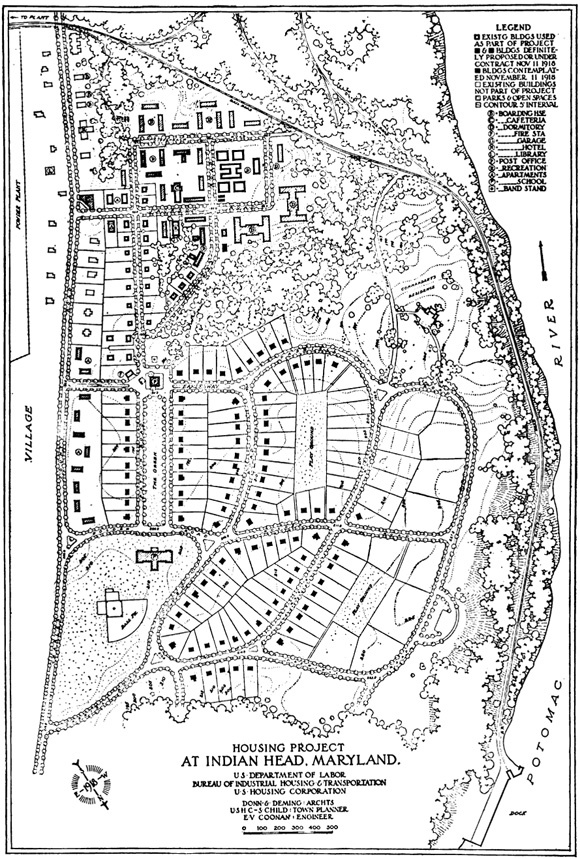
1919 excerpt describing the design of the Indianhead Site:
Area Planned: 180.80 acres. Housing planned: Detached houses, 146 families; apartment houses, 44 families; total, 190 families; temporary dormitories, 1,400 persons. Housing constructed: Detached houses, 100 families; temporary dormitories, 99 persons.
"The design of the new development is simple. On the available area nearest to the powder plant and proving ground, but removed from the through public road, was placed the "village green" surrounded by houses, and connected with the previous housing scheme. The green occupies the broadened upper portion of the little valley which farther to the west becomes a wooded ravine. At the lower westen end of the green, and so in the center of the whole development and well connected with all parts of it, are the post office and fire station. A large tree which was saved between these two buildings furnished a chance for variety and interest without making the road scheme any less practical. At the eastern end of the green on a gentle knoll is the school, next to the playground. The main architectural structures of the scheme are thus concentrated in one composition for usefulness and for appearance as well...
Rigid economy in the expenditure of funds necessitated the abandonment of the well-conceived schoolhouse first designed, the central hall of which (the village hall) was to have had for its motif the south facade of Mount Vernon...Then, too, the first plans for the post office at the other end of the green were abandoned for a cheaper design prepared by the Bureau of Yards and Docks, the Navy Department furnishing the funds for this building..."
"The only houses constructed are detached six-room houses of two different plan types, from corporation standards. There are four different exterior designs. These houses are constructed of frame with all side walls of shingles and all painted white. The roofs are covered with slate-surfaced asphalt shingles, in some cases green and in others reddish-brown. Slight changes in appearance have been given the houses by varying the designs of the porches and by painting the outside blinds different colors.
"Viewing the project as a whole, we find too much similarity. The houses individually are of a good design though somewhat stilted in appearance - a fault which could readily have been overcome by making the front windows of the second story somewhat less in height and lowering the roof."
The Indianhead Site Today
Renderings, 1919
